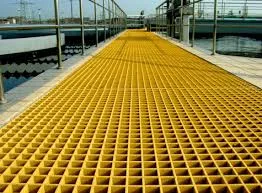
-
 Afrikaans
Afrikaans -
 Albanian
Albanian -
 Amharic
Amharic -
 Arabic
Arabic -
 Armenian
Armenian -
 Azerbaijani
Azerbaijani -
 Basque
Basque -
 Belarusian
Belarusian -
 Bengali
Bengali -
 Bosnian
Bosnian -
 Bulgarian
Bulgarian -
 Catalan
Catalan -
 Cebuano
Cebuano -
 China
China -
 China (Taiwan)
China (Taiwan) -
 Corsican
Corsican -
 Croatian
Croatian -
 Czech
Czech -
 Danish
Danish -
 Dutch
Dutch -
 English
English -
 Esperanto
Esperanto -
 Estonian
Estonian -
 Finnish
Finnish -
 French
French -
 Frisian
Frisian -
 Galician
Galician -
 Georgian
Georgian -
 German
German -
 Greek
Greek -
 Gujarati
Gujarati -
 Haitian Creole
Haitian Creole -
 hausa
hausa -
 hawaiian
hawaiian -
 Hebrew
Hebrew -
 Hindi
Hindi -
 Miao
Miao -
 Hungarian
Hungarian -
 Icelandic
Icelandic -
 igbo
igbo -
 Indonesian
Indonesian -
 irish
irish -
 Italian
Italian -
 Japanese
Japanese -
 Javanese
Javanese -
 Kannada
Kannada -
 kazakh
kazakh -
 Khmer
Khmer -
 Rwandese
Rwandese -
 Korean
Korean -
 Kurdish
Kurdish -
 Kyrgyz
Kyrgyz -
 Lao
Lao -
 Latin
Latin -
 Latvian
Latvian -
 Lithuanian
Lithuanian -
 Luxembourgish
Luxembourgish -
 Macedonian
Macedonian -
 Malgashi
Malgashi -
 Malay
Malay -
 Malayalam
Malayalam -
 Maltese
Maltese -
 Maori
Maori -
 Marathi
Marathi -
 Mongolian
Mongolian -
 Myanmar
Myanmar -
 Nepali
Nepali -
 Norwegian
Norwegian -
 Norwegian
Norwegian -
 Occitan
Occitan -
 Pashto
Pashto -
 Persian
Persian -
 Polish
Polish -
 Portuguese
Portuguese -
 Punjabi
Punjabi -
 Romanian
Romanian -
 Russian
Russian -
 Samoan
Samoan -
 Scottish Gaelic
Scottish Gaelic -
 Serbian
Serbian -
 Sesotho
Sesotho -
 Shona
Shona -
 Sindhi
Sindhi -
 Sinhala
Sinhala -
 Slovak
Slovak -
 Slovenian
Slovenian -
 Somali
Somali -
 Spanish
Spanish -
 Sundanese
Sundanese -
 Swahili
Swahili -
 Swedish
Swedish -
 Tagalog
Tagalog -
 Tajik
Tajik -
 Tamil
Tamil -
 Tatar
Tatar -
 Telugu
Telugu -
 Thai
Thai -
 Turkish
Turkish -
 Turkmen
Turkmen -
 Ukrainian
Ukrainian -
 Urdu
Urdu -
 Uighur
Uighur -
 Uzbek
Uzbek -
 Vietnamese
Vietnamese -
 Welsh
Welsh -
 Bantu
Bantu -
 Yiddish
Yiddish -
 Yoruba
Yoruba -
 Zulu
Zulu
Understanding the Basics of FRP Technology and Its Applications in Modern Engineering Practices
Understanding FRP Steps A Comprehensive Overview
Fiber Reinforced Polymer (FRP) technology has emerged as a significant innovation in the field of construction and engineering. The incorporation of FRP materials has revolutionized the way structures are designed, constructed, and maintained. This article aims to delve into the steps involved in the application and implementation of FRP, showcasing its benefits, challenges, and key considerations.
Step 1 Material Selection
The first step in the FRP process is the selection of appropriate materials. FRP composites consist of a polymer matrix reinforced with fibers, which can be made from materials such as glass, carbon, or aramid. The choice of reinforcement depends on factors such as strength requirements, environmental conditions, and cost considerations. For instance, carbon fiber composites, while more expensive, offer superior strength-to-weight ratios and are ideal for high-performance applications. In contrast, glass fibers provide a more economical option for standard construction uses.
Step 2 Design Process
Once the materials are chosen, the next step involves the design process, where engineers must consider the specific requirements of the project. This includes load calculations, environmental factors, and potential stresses that the structure will encounter. Advanced computational tools, such as finite element analysis (FEA), are often utilized to model the behavior of FRP materials under various conditions. This step is critical as it lays the foundation for ensuring safety, efficiency, and performance in the final structure.
Step 3 Fabrication Techniques
After finalizing the design, the focus shifts to fabrication techniques. There are various methods to manufacture FRP components, including hand lay-up, vacuum-assisted resin infusion, and automated fiber placement. Each method has its pros and cons, affecting the mechanical properties, consistency, and production time of the composites. For instance, vacuum-assisted resin infusion provides a high-quality finish with minimal voids, making it suitable for large-scale productions.
frp step

Step 4 Installation Procedures
The installation of FRP components requires meticulous planning and execution. This step is crucial for ensuring that the materials perform as intended in the field. Proper anchoring, alignment, and bonding techniques must be employed to maximize the structural integrity of the FRP materials. Additionally, workers need to be trained on specific handling requirements, as FRP materials can be sensitive to environmental conditions during installation.
Step 5 Maintenance and Inspection
After the FRP structure is installed, ongoing maintenance and inspection are essential. Unlike traditional materials, FRP is resistant to corrosion and requires less maintenance; however, it is not completely impervious to damage. Regular inspections are necessary to identify any potential issues, such as delamination or physical damage, that may occur over time. Implementing a sound maintenance plan ensures the longevity and reliability of the FRP structures.
Step 6 Evaluation and Performance Monitoring
Finally, the performance of the FRP components must be evaluated over time. This involves monitoring the structural performance under real loading conditions and comparing it with the design expectations. Modern technologies such as sensors and data analytics can be employed to provide real-time feedback on the condition of the structure, aiding in proactive maintenance decisions and ensuring safety.
Conclusion
In conclusion, the application of FRP technology involves a series of critical steps, from material selection to performance monitoring. Each phase plays a vital role in maximizing the benefits of FRP, such as reduced weight, high tensile strength, and resistance to environmental impacts. As the construction industry continues to evolve, understanding and effectively implementing these steps will be paramount to ensuring the successful utilization of FRP materials in modern engineering solutions. The future holds great potential for the advancement of FRP technologies, promising more durable and efficient structural applications.









